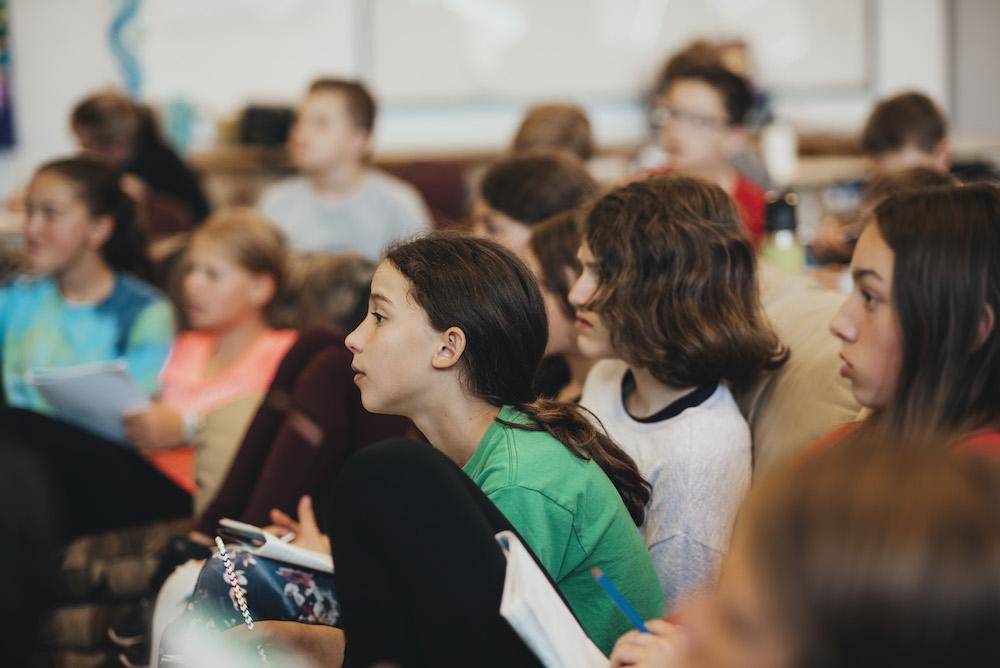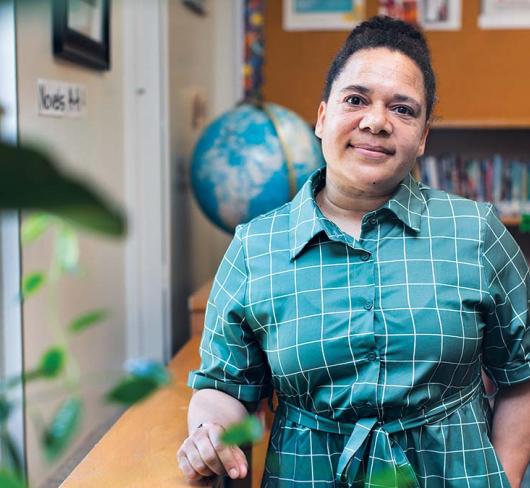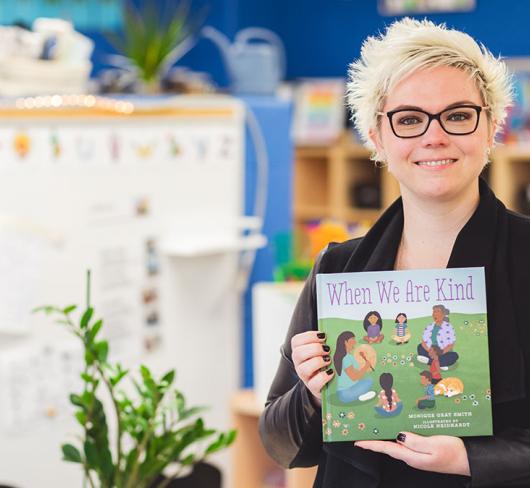
Class Size Matters: Why I'm Fighting Any Increases
It came as no surprise to me last year that the newly elected PC government in Ontario would suggest massive cuts to public education. Along with social services and healthcare, education is a big expense in any provincial budget, and so it logically follows that a premier bent on austerity would look to those these sectors first. What was surprising, however, was then-Minister of Education Lisa Thompson stating in an interview that proposed changes to education – including an increase in class size – were what teachers and families of students had asked for.
Last year, the funded average for class sizes in the junior and intermediate grades was 23.84, but that is set to increase in September 2019 to 24.5. While the average increase in elementary class size appears quite small and seems like a modest reduction in funding, using averages when discussing class size can be very misleading. In the 2018-2019 school year, before any increase or change to junior and intermediate class size funding was announced, I was already teaching a class of 32 grade six students. Some of my colleagues had classes of fewer than 24 students, but most did not. Because school boards use the class sizes of all junior and intermediate classes to determine their class size average, the numbers become skewed. It means that smaller rural schools in a school board may have classes well below 24 students, while larger schools in that school board may have classes well above.
Here’s the thing: teaching 32 students is not impossible. It does, however, change the quality of education my students receive in small but noticeable ways. I have been teaching in Ontario since 2005, and in that time have worked for three different school boards. My classes have ranged from 18 to 32 students. I can say with certainty that I am a different teacher with 14 fewer students. Students in my class of 32 would be hard-pressed to argue that anything was missing from their education. They had been together for three years, so they can’t really imagine it any other way. I notice, however. I know that they had a number of diminished experiences, in the best case, and some potentially dangerous ones, in the worst.
What's Different?
A group this large means fewer hands-on learning opportunities. In past years, my students have made sculptures to represent characters in books we’ve read, built models of various types of communities, sewn sock monkeys and created biodiversity dioramas. With a group of 32 students this kind of creativity is simply not possible. Not only is it easier to manage a group this size with seat work, the cost of such projects (and we all know teachers largely buy their own supplies for these) becomes prohibitive.
Furthermore, it is much easier to assess lower-level thinking skills, such as basic comprehension, over creativity, analysis and synthesis, so when it comes to needing to assess 32 students across 15 plus subjects and strands, handouts make it easier.
It was particularly challenging for the teacher who provided planning to my class. In 40 minutes a day (which quickly dwindles to about 35 when we factor in transitions), she simply didn’t have time to do anything requiring creativity. As she was teaching them science and writing in that time, that meant that students didn’t get to do many experiments. Yes, the curriculum was taught, but the joy of science for many students is getting to actually figure out how things work, not simply read about them.
Another area where I felt the impact of the class size was in any task that required one-on-one attention. Individualized reading assessments and running records take about 15 minutes each, so when I tried to do one a day, it took me six weeks to complete them. While I was doing those, no one else in the class got my attention. Any other one-on-one attention is thinly spread. I’ve had to give my attention primarily to the students who were struggling to master certain concepts, which means those working at or above level weren’t always getting valuable conference time with me to find ways to improve their work.
It’s been a struggle to provide students with descriptive feedback in a timely way, especially on their writing. I’ve always used feedback portfolios and had students transcribe my suggestions into a chart for future reference. I can see the whole year’s feedback at a glance, and there was a marked decrease in both the quality and quantity of feedback I gave, compared to previous years. I started to dread due dates, because I knew it meant clearing my week to work on my marking at home if there was any hope of returning the assignments before the students forgot what they’d been working on.
Another difficult part of that year was the physical and mental gymnastics required to incorporate technology in meaningful ways. Each classroom started the year with 8 mini laptops. I eventually brought my own laptop from home to increase the computer to student ratio to not even quite one to three. We were not coding. We were not problem solving. We didn’t even have time for basic word processing skills and limited time for research. For the two times that year we did technology-based assignments, I had to borrow from four other classrooms to complete a set, managing overlapping schedules and of course keeping other classes from having access to technology. Students are lacking basic computer literacy skills. In June, I was still teaching students how to log in.
I teach French Immersion and half of our day is meant to be oral to increase confidence in and mastery of the most essential language skills. However, 32 students working collaboratively to practice these skills in a confined space is loud. The sheer volume meant my students with anxiety often needed to leave the class.
Gym class with 32 students meant we couldn’t play many team sports such as floor hockey, badminton or basketball unless we did it in rotations, meaning each student might only get eight minutes of active play in our 40-minute period. Even supervising them in the hallway on the way to the gym was an impossible task because I couldn’t actually see the end of the line.
Worst of all, there were days when I didn’t even get to have a conversation with some of my students. The foundation of good teaching, in my opinion, has always been relationships. How will my students feel valued if I don’t even get to talk to them, individually, as people, and not simply as a member of the giant unit that is my class? The junior and intermediate students in my school were dealing with anxiety, depression, suicidal ideation, OCD and learning disabilities. One student witnessed domestic abuse. Another lost a parent in a tragic accident. Dozens more were ESL learners from refugee camps or war zones. Many students came to school without food.
Any teacher can tell you stories that will make you weep. I was fortunate to have a class of students with relatively few high needs compared to some of my colleagues. I only had a half dozen students who actively need my individual attention. Some of my colleagues had twenty. How can we serve them in overcrowded classrooms? It is embarrassing to admit how many times an anxious student left the class unnoticed, or did not return from a washroom break in a timely way. Remember, my class was generally working well. It is not as though students slipped out amidst a cacophony – they could simply vanish in the busyness that 32 students moving from the carpet to their desks can create.
Students need more support, not less. They need more adults in the schools. The students who will be most impacted by any increase in class size are those who are most vulnerable, those who live in poverty, who have learning disabilities or who have mental health issues. They are already struggling and we will become a system that fails them.
Investing in Education is the Right Thing to Do
The increase in class size at the high school level, that may now be delayed until the 2020-2021 year, takes all the above problems and compounds them. If my class can have 32 within the current average of 23.8, what will an average of 28 actually look like? I don’t think my high school colleagues are exaggerating when they picture classes with 36 to 40 or more students. These students already faced a massive cutback in course selections for this school year before the August announcement that delayed class size increases for grades 9 to 12 until next year.
I am not complaining. I love teaching. I teach not because, as some politicians may suggest, I want my “three months of holidays,” but because I genuinely care about my students. Otherwise, I wouldn’t coach sports or organize school-wide events, spend my lunch breaks talking to students or meet continuously with parents to come up with plans to better support their children. I have never considered myself a particularly political person, but I cannot sit back and watch these children be steamrolled by poor policy decisions. Investing in education is the right thing to do. I will work tirelessly to make that happen.
I wrote a letter to then-Minister of Education Lisa Thompson last spring urging her to consider the damage she will cause to thousands of young Ontarians if the proposed changes to class size go through. We teachers will continue to do our best, but we cannot support the needs of 30 to 40 or more students at once. I refuse to believe it is the will of the people. Alongside us, educators, parents and community partners have been writing and making their voices heard too, letting the Ministry know just how we feel. It is crucial to continue to fight for the right of every young Ontarian to receive the first-class public education we are claiming to provide.
Kimberly Veneziale is a member of the Lakehead Teacher Local.

